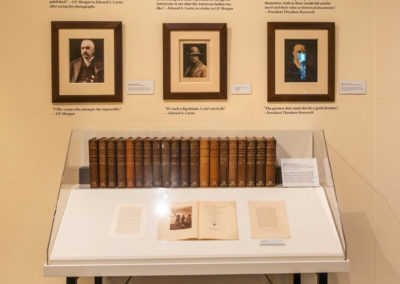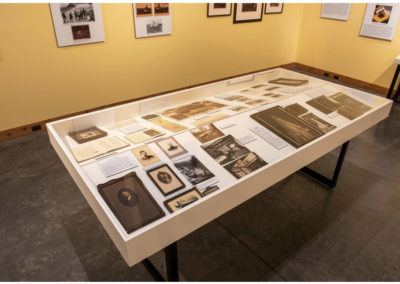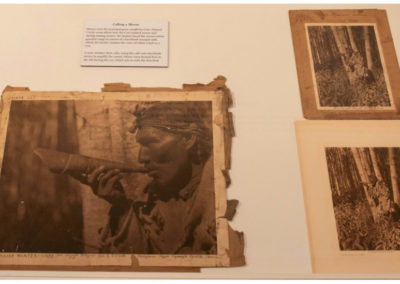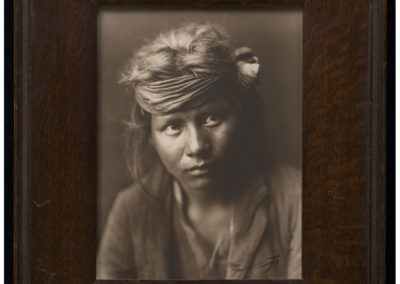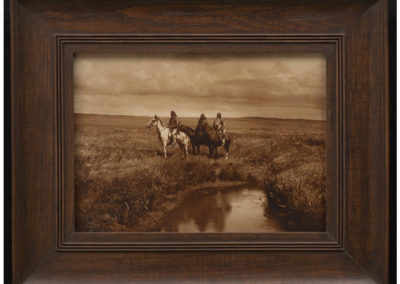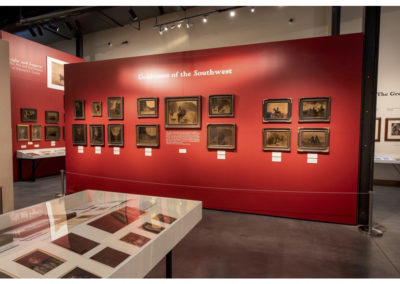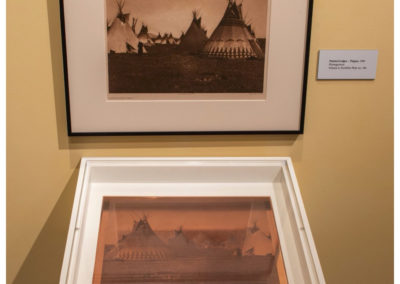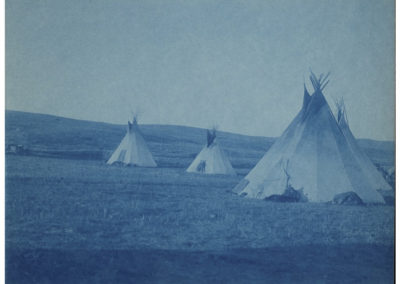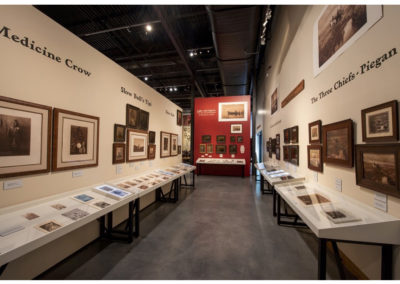A review of the exhibition at the Western Spirit: Scottsdale’s Museum of the West
Looking at the precursors of images by popular photographers, such as Charles Leander Weed, Carleton Watkins, and other 19th century photographers that made spectacular images of Yosemite and exploring the possible influences on others who followed, like Ansel Adams has always intrigued me. Finding for the anomalies and experiments that foreshadowed styles that followed years later and the interplay between vernacular and fine art photographs became a fascination and I began scouring stacks of cartes-de-visites, stereoviews, cabinet cards, and later snapshots and photographic post cards.
The work of Edward Curtis has always created a quandary – while his gravures and reproductions had saturated the book and décor markets becoming so common, it was hard to stop and really look at the images. His soft focus initially put me off; I was fascinated by the incredibly sharp contact prints of most 19th and early 20th century images.
I’m not sure what piqued my interest in Curtis, but after seeing not just his often poorly reproduced images in books, but his orotones and platinum prints in person, I started paying attention to his work. Looking at his style and process led me to the work of Gertrude Käsebier, whose portraits of the Sioux from circa 1898, of which Curtis was likely aware, were precursors of his chiaroscuro Pictorialist portraits.
The new exhibition, Light and Legacy: The Art and Techniques of Edward S. Curtis at Western Spirit at Scottsdale’s Museum of the West, offers a tutorial and insight into his work and career. This is the largest and most comprehensive exhibit of Curtis material that I’ve seen. The exhibition showcases the extensive Edward Curtis collection of museum trustee and collector Tim Peterson and was co-curated by Assistant Director for Collections and Exhibitions, Dr. Tricia Loscher. The exhibition opens with a complete set of Curtis’s The North American Indian volumes, then provides an amazing look at the range of work of the photographer and his studio, and insight into his creative process.
Ephemera provides background and context about Curtis and the period in which he worked to document a time of transition for Indigenous populations. Included in the exhibit are examples of the range of formats that Curtis produced showing an image from the original negative, through silver, albumen, platinum prints, and orotones, to the gravures, and scores of examples of the copper engraving plates that were used to produce them.
A rare opportunity provided by the exhibition explores the range of image sizes and is particularly enlightening. Several rare examples of small “salesman’s sample” sized versions of Curtis orotones provide context for the larger examples. Also available for viewing is a presentation of the original “pie crust” and “bat wing” frames and arts and crafts frames used by the Curtis studio.
I highly encourage all Arizona Photography Alliance members to visit the exhibition. Neil Miller and Richard Laugharn are planning a visit for the group in Spring, 2022. In the meantime, True West Magazine produced an issue that includes several articles about Curtis and serves as a catalog for the exhibition. See Have Camera, Will Travel article in True West Magazine.
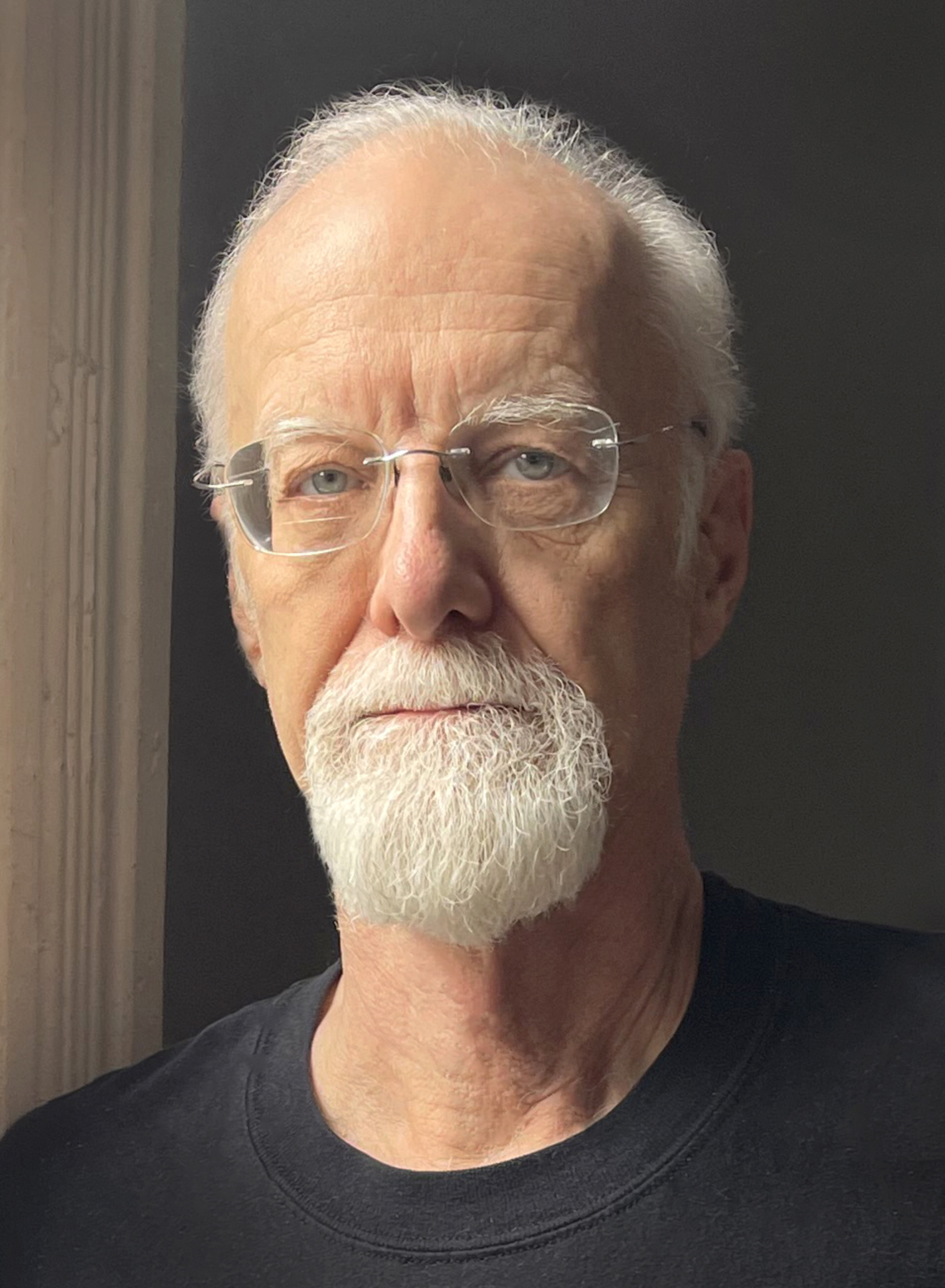
Jeremy Rowe
Contributing Writer
Jeremy Rowe has collected researched and written about historic photography for over 30 years. His collecting has focused on 19th and early 20th century photographs – ranging from daguerreotypes and cased images to mounted photographs, real photo postcards, and vernacular images with an emphasis on Arizona and the Southwest, Lower Manhattan, and the open-ended category of “images that strike me.”
Jeremy has curated exhibitions and served on the boards of the Daguerreian Society, National Stereoscopic Association, Daniel Nagrin Film, Theater and Dance Foundation, In Focus, and Ephemera Society of America. Jeremy is currently working with the Library of Congress Prints and Photographs to establish a National Stereoscopic Research Collection and Research Fellowship.
Jeremy has written numerous publications about historic photography, including Arizona Photographers 1865 – 1920 a History and Directory, Arizona Real Photo Postcards a History and Portfolio, and Arizona Stereographs 1865- 1930.
Jeremy has three degrees from Arizona State University and is an Emeritus Professor. He is currently a Senior Research Scientist at New York University and travels between New York City and Arizona.


